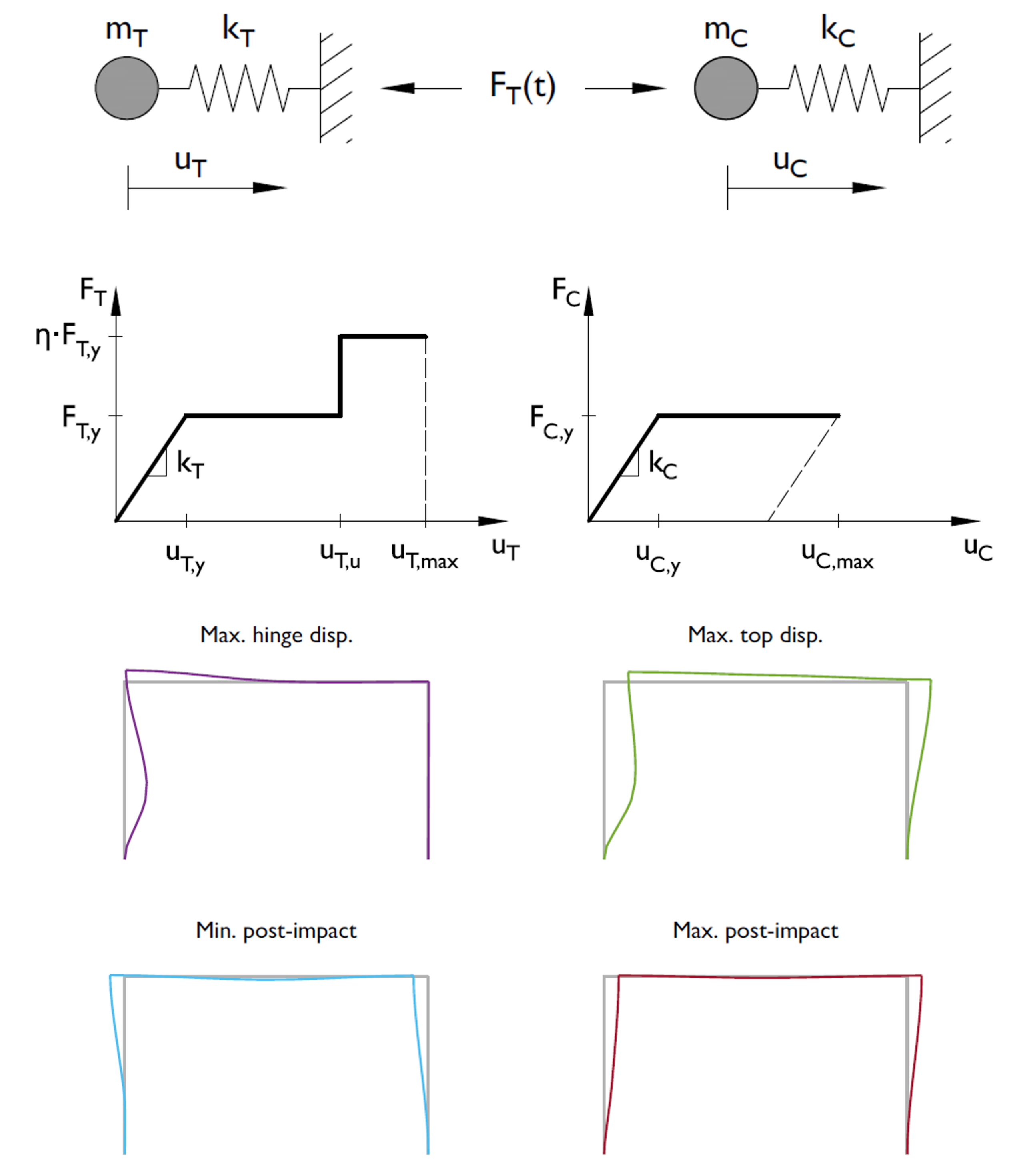Structural safety of RC bridge piers under train impact
Author: Minu Lee
Language: English
ETH-Collection: external pagehttps://doi.org/10.3929/ethz-b-000596046call_made
Abstract
The analysis of impact-related hazards for the design of bridge components in railway perimeters has been a field within civil engineering which often seemed to be negligently examined. Code-based design procedures depend on static equivalent loads which were generated from basic energy conservation laws where the structural response does not have an influence at all. The aim of this study was to identify the characteristics of the dynamic behaviour of both the impacting train and the impacted structure as well as the most influential parameters.
The methods consisted of the implementation of a finite element model which was used for static and dynamic time history analyses of the structural response, whereas the impacting train was modelled as a simple mass-spring system. The resulting findings were used to reduce the complex three-dimensional structure to an equivalent single-degree-of-freedom system. On the basis of simple mechanical principles, an analytical approximate design scheme for the estimation of the ductility demand and capacity of RC bridge piers under train impact was developed. For the given example structures, it was possible to predict the structural response with reasonable accuracy. Eventually, it was shown that not only the structural resistance should be considered, but that the deformation capacity is of paramount importance for a safe design. Therefore, this thesis is hoped to contribute to the proper assessment of the resilience of structures exposed to the risk of impact.
However, the analysis has also revealed a high sensitivity of the response to the properties of the structure and the impacting train. Thus, the effects of natural variability in material and the uncertainties in modelling the real structure still have to be examined in more detail. Moreover, it is not possible to proclaim a final statement on the effective influence of the initial train velocity on the evaluation of the failure risk, which requires further probabilistic analyses.

